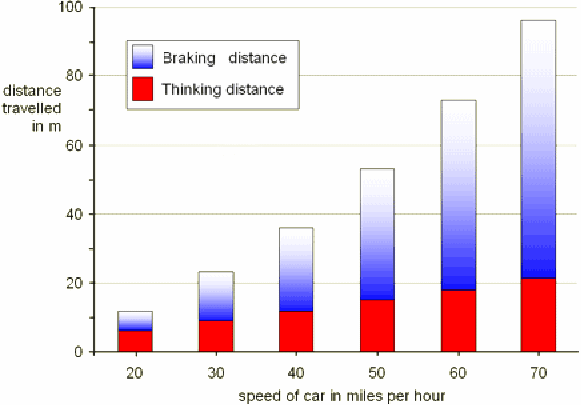A car is travelling along a road and sees an obstacle ahead. Before the car stops. the driver has to apply the brakes, and this is not instant. The driver spends a small period of time just thinking about applying the brakes – we may assume this thinking time to be constant. During this period the car does not slow, so travels at a constant speed, so that the thinking distance is proportional to the speed of the car: if we double the speed, we double the thinking distance.

The braking distance does not behave in the same way. If we double the speed, the braking distance increases by a factor of![]() and if we increase speed by a factor of 3, then the braking distance increases by a factor of
and if we increase speed by a factor of 3, then the braking distance increases by a factor of![]() In general, if we increase the speed of the car by a factor of
In general, if we increase the speed of the car by a factor of![]() then the braking distance will increase by a factor of
then the braking distance will increase by a factor of![]() This is because the kinetic energy of the car is
This is because the kinetic energy of the car is![]() In braking, this kinetic energy has to be dissipated, and this happens in the brakes. The brakes apply a force
In braking, this kinetic energy has to be dissipated, and this happens in the brakes. The brakes apply a force![]() for a distance
for a distance![]() to dissipate all the kinetic energy.
to dissipate all the kinetic energy.
Hence
